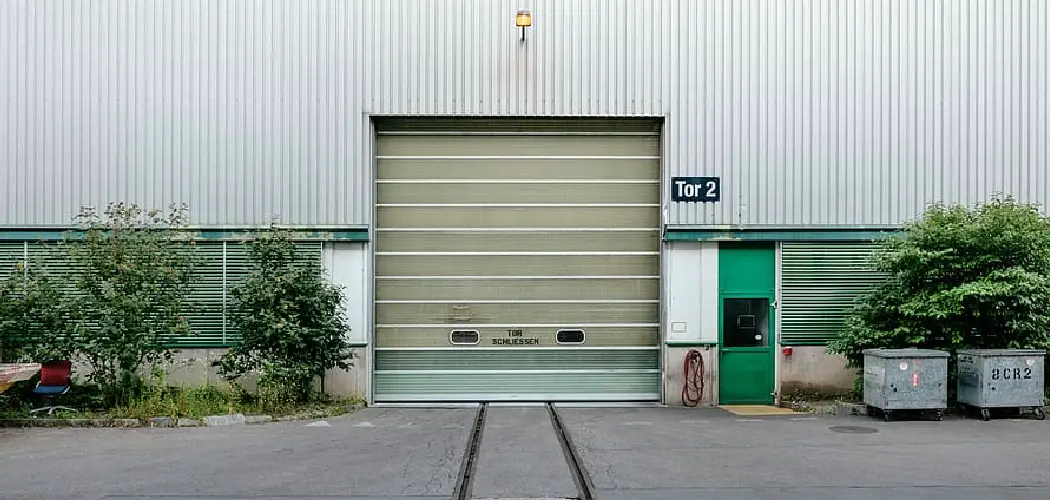Roll-up garage doors are a popular choice for both residential and commercial properties due to their space-saving design, durability, and sleek functionality. Unlike traditional garage doors, they roll up neatly into a compact space, making them ideal for areas with limited headroom. However, the convenience they offer also requires a robust locking mechanism to ensure security.
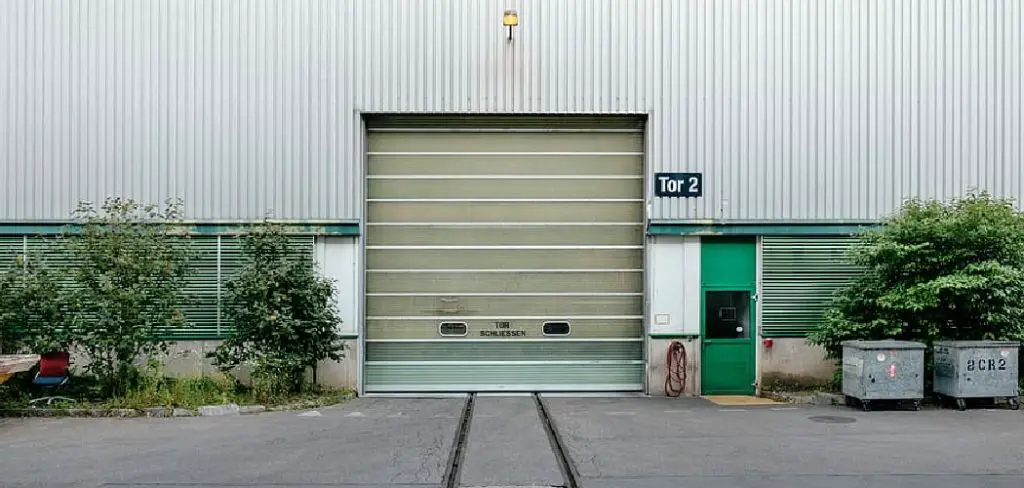
Securing your garage door is critical to protecting your belongings, vehicles, and overall home safety. Intruders often target garage doors, so implementing effective locking strategies is essential to deter unauthorized access and give you peace of mind.
This article serves as a comprehensive guide on how to lock a roll up garage door effectively. From understanding the different types of locks available to tips on installation and maintenance, we aim to help you choose the best security solution to safeguard your property.
Types of Roll-Up Garage Doors
Roll-up garage doors come in various types, with differences in materials, designs, and mechanisms influencing their usability and security features. Common materials used for roll-up garage doors include steel, aluminum, wood, and vinyl. Steel and aluminum doors are popular for their durability and resistance to harsh weather, while wood offers a more traditional aesthetic. Vinyl is a lightweight and low-maintenance option, suitable for homeowners looking for versatility.
When choosing a roll-up garage door, it’s essential to consider whether you prefer a manual or automatic system. Manual roll-up doors rely on physical effort to operate, typically incorporating latch systems or padlocks for security. Conversely, automatic roll-up doors come equipped with remote-controlled mechanisms, often featuring advanced electronic locks for added convenience and protection. Understanding the differences in locking mechanisms will help determine the best option for your needs.
Most roll-up garage doors include essential built-in security features, such as sturdy locks or latch systems. Additionally, many modern doors integrate electronic locking options and advanced technology, such as rolling code systems, to prevent unauthorized access. By evaluating these materials, designs, and security features, you can effectively choose and secure your roll-up garage door to protect your property.
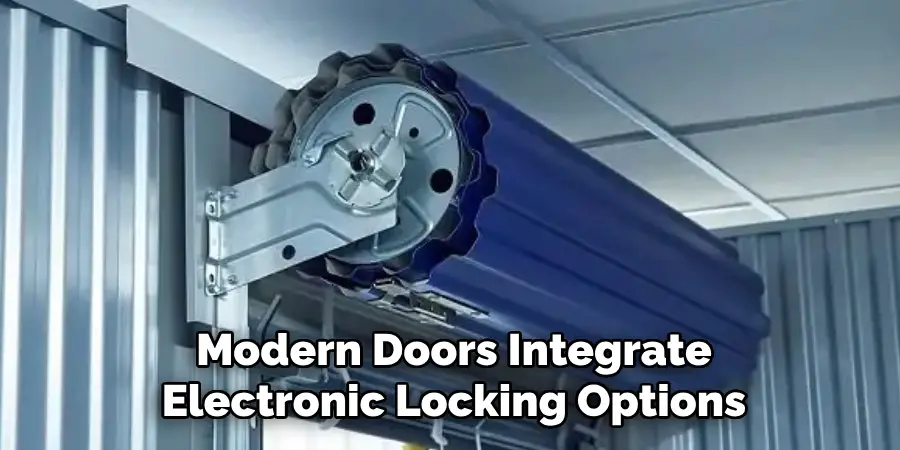
Basic Locking Mechanisms for Roll-Up Doors
Understanding the variety of locking mechanisms available is essential when securing roll-up garage doors. Below are some of the most common options and how they can enhance safety and protection.
Built-in Slide Locks
Built-in slide locks are a standard feature on many roll-up doors. These locks function by sliding a metal bar into a designated slot on the door track, effectively preventing the door from moving. They are easy to use, cost-effective, and ideal for standard security needs. Slide locks are particularly useful for residential properties or locations with controlled access. While they provide a solid level of security, they can be paired with additional locks for increased protection.
Padlocks and Hasps
Padlocks and hasps are an excellent choice for those seeking extra reinforcement. This external locking mechanism involves attaching a hasp to the door and securing it with a heavy-duty padlock. This option is versatile and can be used on most door types. It is particularly beneficial for commercial properties or locations with high traffic, as it adds a visible layer of deterrence. Regularly checking the padlock for wear and tear is critical to maintaining security.
Bolt Locks and Drop Bars
Bolt locks and drop bars offer manual reinforcement by inserting a horizontal or vertical bar to lock the door in place. These highly secure mechanisms are commonly used in storage facilities or industrial settings. They are reliable options for locations that require enhanced security but may not need frequent access.
Electronic and Smart Locks
Modern locking solutions like electronic and smart locks provide advanced security features, such as remote control, keyless entry, and rolling code technology. These highly convenient systems offer flexibility for users accessing the door from different locations. They are ideal for smart homes or businesses looking to integrate technology into their security measures. Pairing these locks with traditional mechanisms can further enhance security.
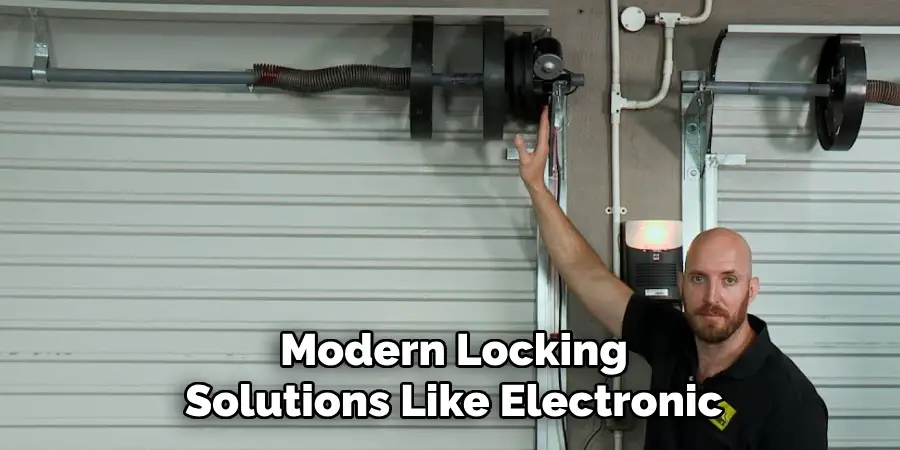
Carefully selecting the right locking mechanism based on your specific needs will ensure your roll-up door remains both convenient and secure.
How to Lock a Roll Up Garage Door: Install a Manual Lock
Choosing the Right Lock Type
Selecting the appropriate lock for your roll-up garage door is essential to ensure both security and functionality. Common options include padlocks, slide bolt locks, and drop bar locks. Padlocks are ideal for basic security and are easy to use. Slide bolt locks provide enhanced protection by anchoring the bolt directly into the door frame. Drop bar locks are one of the most secure options, as they use a metal bar that physically blocks the door from being opened.
Step-by-Step Installation Guide
Tools Needed and Preparation
Before starting the installation, gather the necessary tools, including a power drill, screwdriver, measuring tape, pencil, and appropriate hardware such as screws or bolts. Ensure the work area is clean and free of debris for a safe and efficient process.
Positioning the Lock on the Door
Identify the ideal location for the lock, usually at the bottom or side of the roll-up door where it connects securely to a fixed structure. Use the measuring tape and pencil to mark the spots where the lock hardware will be attached.
Drilling, Attaching Hardware, and Securing the Lock
Carefully drill holes at the marked points based on the hardware requirements of your chosen lock type. Attach the locking mechanism to the door using screws or bolts, ensuring it is tightly secured. For padlock installations, attach the hasp and secure it with the lock. For slide bolts or drop bars, ensure the locking components align correctly for smooth operation.
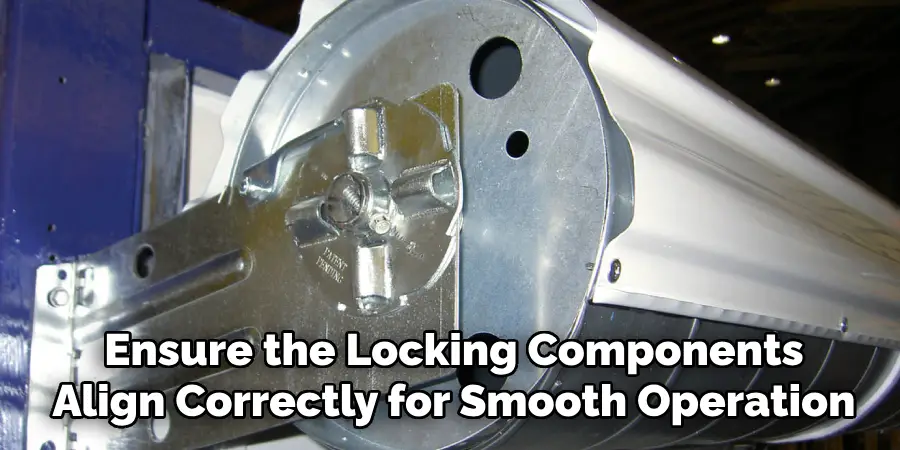
Safety and Maintenance Tips
Routine maintenance ensures your lock’s longevity and reliability. Inspect the lock and its hardware for rust, wear, or damage. Use lubricant to prevent mechanisms from sticking and clean the lock components to avoid debris buildup. Following these practices, you can maintain a secure and functional locking system for your roll-up garage door.
Locking an Automatic Roll-Up Garage Door
Using Built-In Electronic Locks
Modern automatic roll-up garage doors are often equipped with built-in electronic locking mechanisms. Engaging or disengaging these locks is typically straightforward using a remote control or a wall-mounted control panel. Press the designated lock button on the remote or panel, ensuring the door is fully closed. An indicator light or sound may confirm the lock’s activation. To unlock, press the unlock button, and the mechanism will deactivate, allowing the door to open. Always follow the manufacturer’s instructions to avoid misoperation and ensure the locking system functions efficiently.
Adding Supplemental Manual Locks
Even with electronic locks, adding a supplemental manual lock can enhance security. These manual locks, such as slide bolts or key-operated mechanisms, are particularly valuable during power outages or in case of electronic system failures. Install the manual lock on the inside of the garage door to prevent unauthorized access while maintaining a streamlined exterior. Ensure the lock is accessible and easy to operate when needed.
Security Best Practices
Regularly update your garage door’s access codes to maximize security, especially if you use a keypad system. Monitor the door’s operation for irregularities, and address any mechanical or electronic issues promptly. Combining proper maintenance with regular updates minimizes vulnerabilities, ensuring the safety of your home and belongings.
Tips for Enhancing Garage Door Security
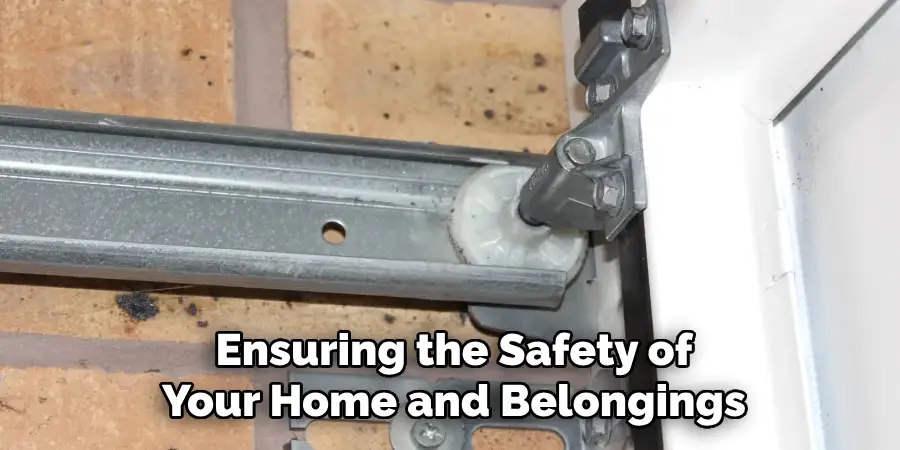
Reinforcing the Door and Frame
One of the most effective ways to improve garage door security is by reinforcing the door and its frame. Consider upgrading to a door made from durable materials such as steel or solid wood, which are more resistant to forced entry. Additionally, reinforce the frame with metal brackets or high-quality hardware to reduce the risk of break-ins. Installing a bar or brace across the inside of the door can provide an extra layer of protection.
Installing Motion Sensors and Alarms
Adding motion sensors and alarms to your garage door setup serves as a powerful deterrent against intruders. Motion-activated lights illuminate the surroundings when movement is detected, making it difficult for potential thieves to operate unnoticed. Similarly, pairing the system with an audible alarm system that activates during unauthorized access attempts can help scare off burglars and alert you to potential threats.
Routine Inspection and Maintenance
Regular inspection of your garage door and its components ensures proper functionality and security. Check for rusted, worn-out, or misaligned parts and replace them immediately to avoid creating weak points. Please pay special attention to locks, hinges, and the automatic opening system, ensuring they operate smoothly. Routine maintenance extends the door’s lifespan and keeps your garage secure against potential breaches.
Common Problems and Troubleshooting
Lock Jamming or Difficulty Operating
Locks can occasionally jam or become difficult to operate due to dirt, debris, or a lack of lubrication. Over time, these obstructions can restrict movement, making it harder to secure your garage. To fix this, clean the lock mechanism and apply a high-quality lubricant designed for locks. If the issue persists, consider consulting a professional locksmith to inspect for internal damage.
Wear and Tear on Lock Components
Constant use and exposure to weather can lead to wear and tear on lock components, such as keys, cylinders, or bolts. These weaknesses can compromise security. Minor wear can often be addressed by repairing the affected parts, but severe damage may require a complete lock replacement. Regularly checking the lock’s condition helps determine the appropriate action to maintain its effectiveness.
Dealing with Misaligned Doors
A misaligned door can make locking or unlocking difficult. This issue is often caused by uneven tracks or loose hinges. To ensure smooth locking and proper alignment, inspect the door’s tracks and hinges and tighten or adjust as necessary. Professional assistance may be required for significant alignment issues.
Legal and Safety Considerations
Compliance with Local Regulations
Adhering to local regulations and building codes is crucial when installing or maintaining locks. These rules often include fire safety standards and emergency egress requirements to ensure that doors and windows can be easily unlocked during emergencies. Compliance not only promotes safety but also avoids potential legal penalties.
Child Safety Measures
Implementing child safety measures is essential to prevent accidental locking or injuries. Consider adding childproof locks or safety catches on doors and windows, especially in homes with young children. These features help protect children from accessing restricted areas or inadvertently locking themselves in unsafe spaces.
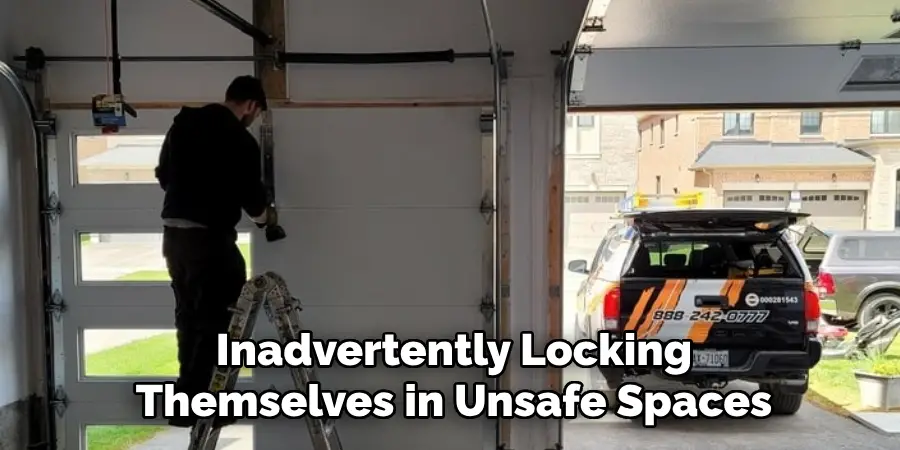
Insurance and Security Requirements
Proper locking mechanisms are often a key factor in meeting insurance company requirements. Homeowner policies may demand specific types of locks, such as deadbolts or smart locks, to minimize the risk of theft or damage. Maintaining secure and functional locks ensures insurance coverage eligibility and could lower premiums.
Conclusion
Choosing the right locking mechanisms is crucial for both residential and commercial security. From traditional deadbolts to advanced smart locks, every option plays a role in safeguarding your property. For those wondering how to lock a roll up garage door, consider installing specialized locks such as slide bolts or electronic locking systems. Combining physical and electronic security measures enhances protection and resilience against unauthorized access. Regular maintenance of locks ensures their functionality and longevity. You can achieve peace of mind and optimal security by carefully assessing your needs and selecting the best solutions for your garage door type.
I am Rick. I grew up helping my dad with his handyman service. I learned a lot from him about how to fix things, and also about how to work hard and take care of business. These days, I’m still into fixing things- only now, I’m doing it for a living.
I’m always looking for new ways to help people grow and develop. That’s why I have created this blog to share all my experience and knowledge so
that I can help people who are interested in DIY repair.

